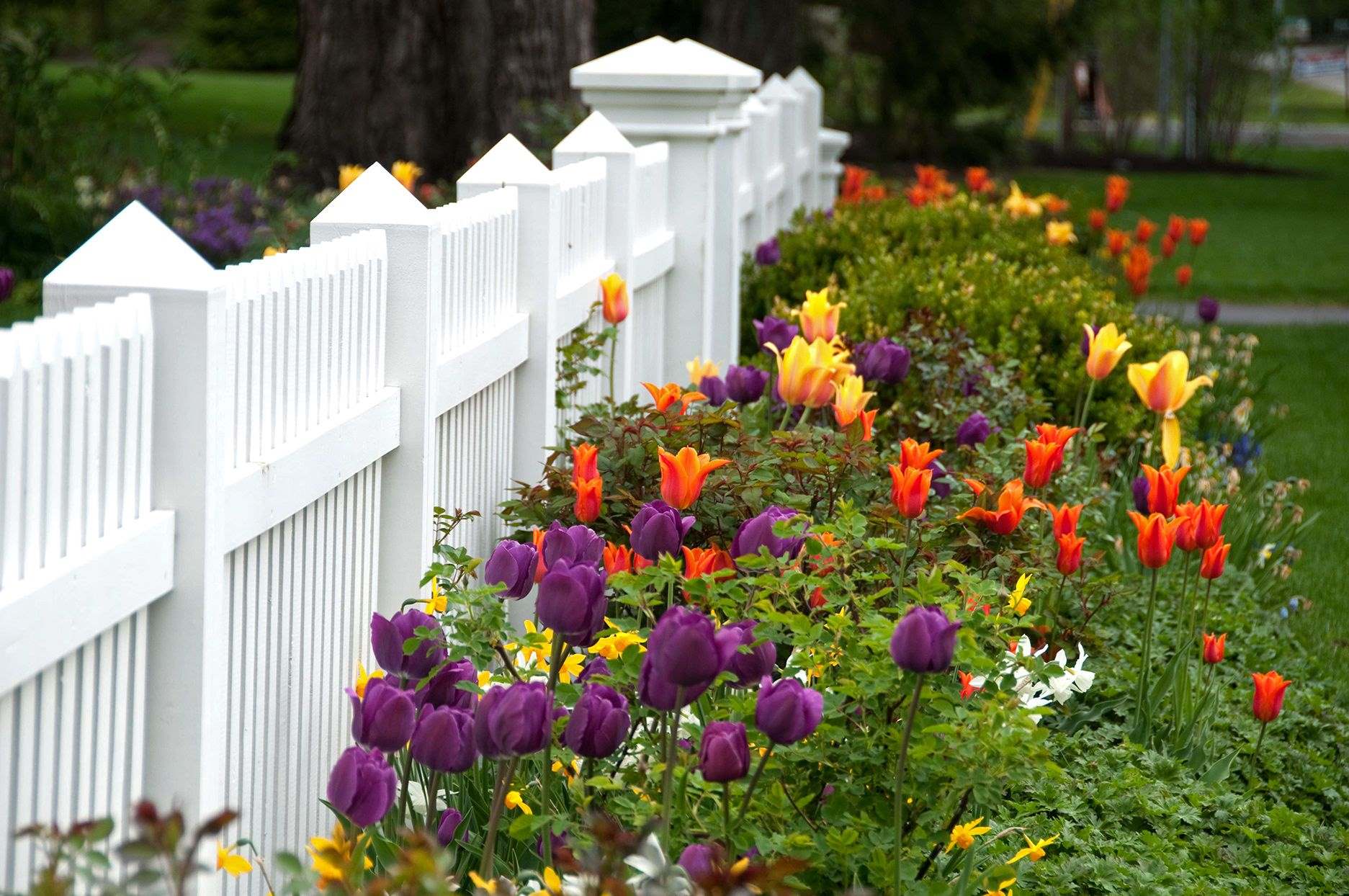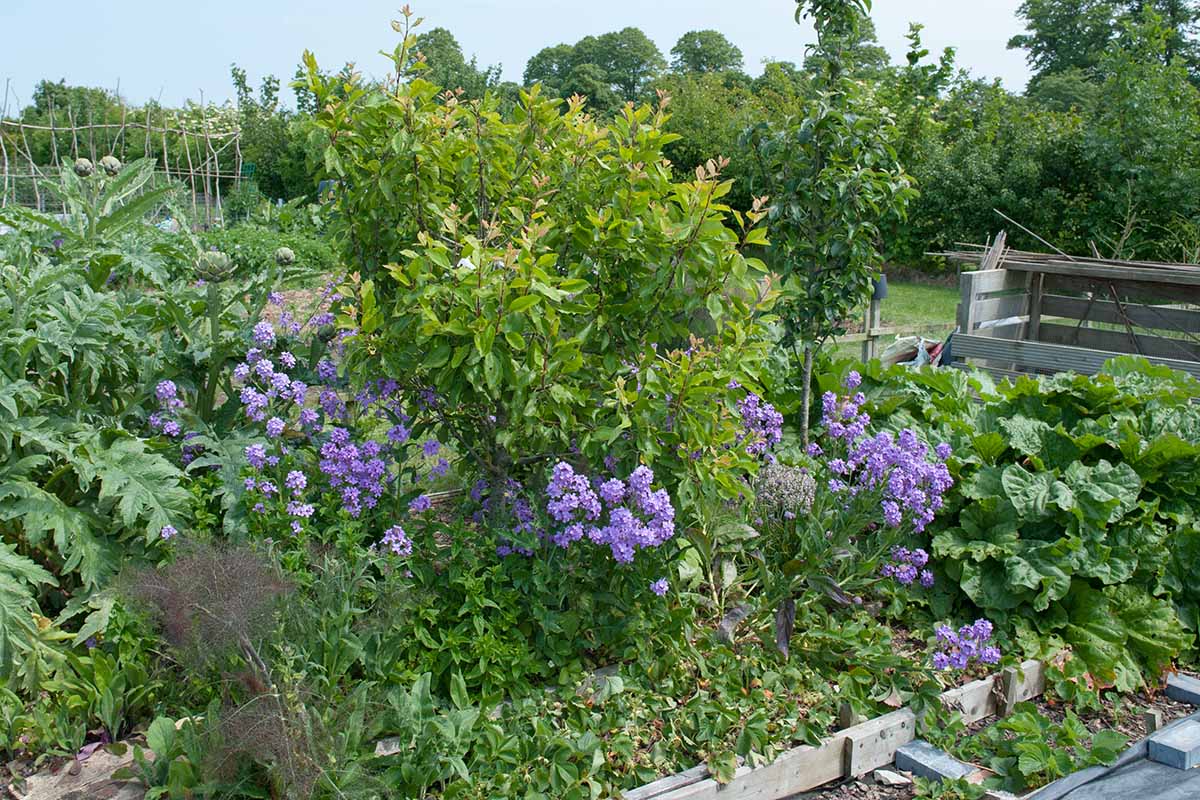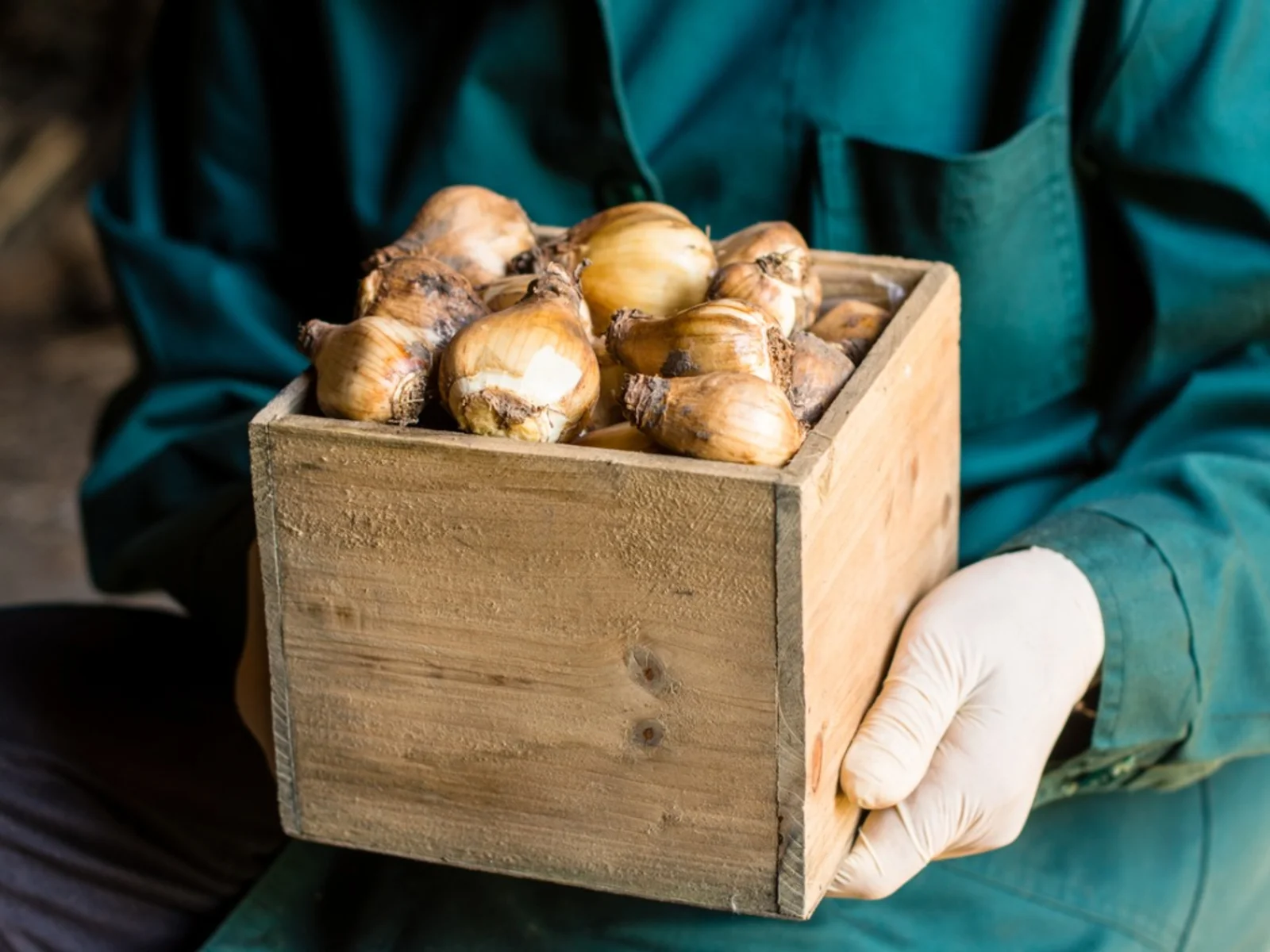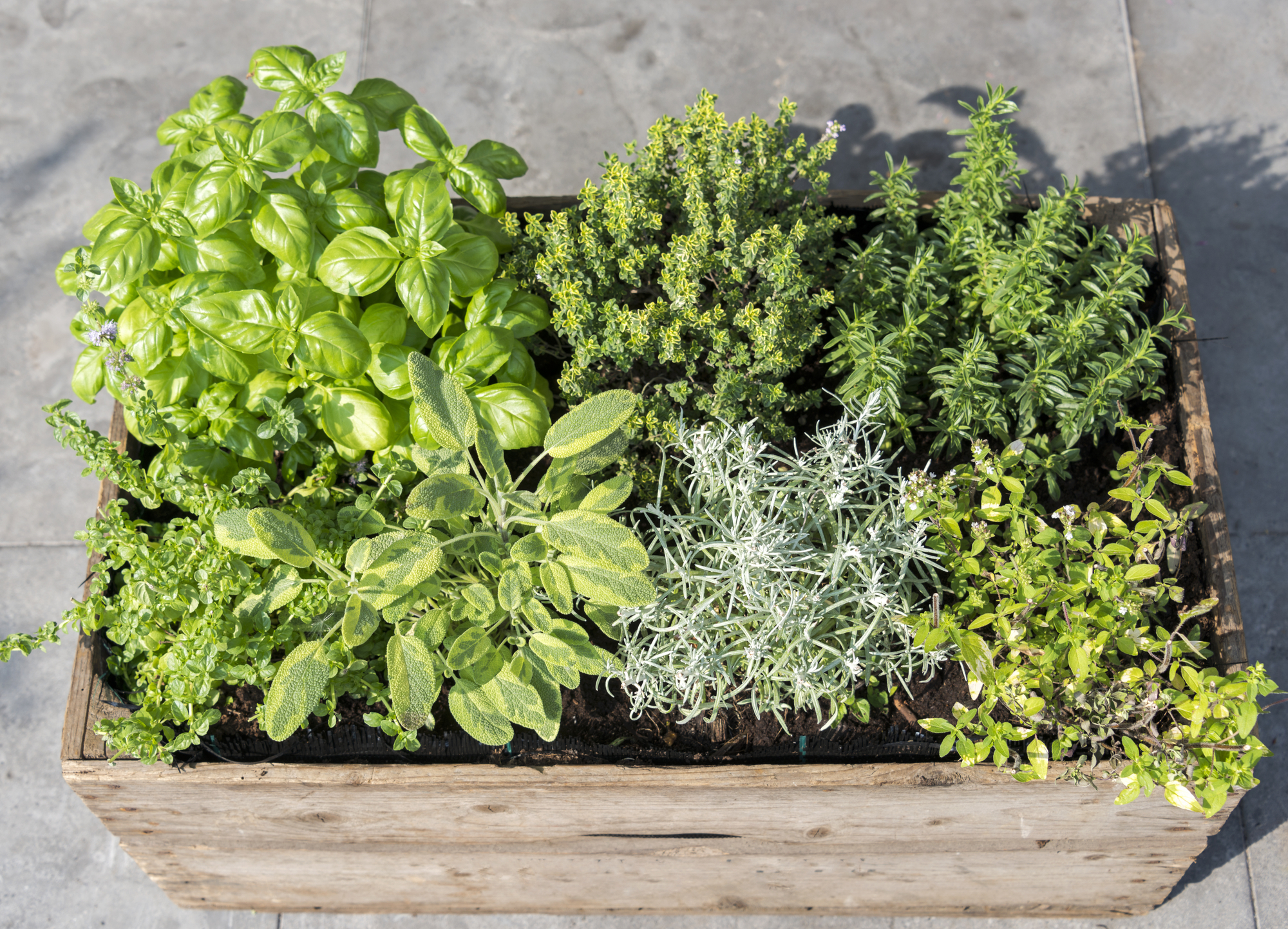Home>Types of Gardening>Ornamental Gardening>How To Plant Bulbs And Perennials Together


Ornamental Gardening
How To Plant Bulbs And Perennials Together
Modified: January 22, 2024
Learn how to create a stunning landscape with our guide on planting bulbs and perennials together. Discover expert tips and tricks for ornamental gardening.
(Many of the links in this article redirect to a specific reviewed product. Your purchase of these products through affiliate links helps to generate commission for Chicagolandgardening.com, at no extra cost. Learn more)
Table of Contents
- Introduction
- Benefits of Planting Bulbs and Perennials Together
- Choosing the Right Bulbs and Perennials
- Site Selection and Preparation
- Planting Bulbs and Perennials Together: Step-by-Step Guide
- Maintaining and Caring for Bulbs and Perennials
- Common Mistakes to Avoid
- Creating Beautiful Combinations and Designs
- Conclusion
Introduction
Welcome to the world of ornamental gardening, where beauty and nature blend seamlessly to create stunning landscapes. One of the key aspects of creating a visually appealing garden is mastering the art of combining bulbs and perennials. By planting these two types of plants together, you can achieve a continuous display of color and foliage throughout the seasons.
Imagine a garden that bursts into a kaleidoscope of vibrant blooms in spring, transitions into a lush canvas of foliage in summer, and ends with a breathtaking display of autumn hues. This is what planting bulbs and perennials together can offer.
With bulbs, you can introduce early-season flowers like tulips and daffodils, while perennials provide a lasting foundation of foliage and color. Together, they create a dynamic and ever-changing garden that captivates the senses and adds a touch of magic to your outdoor space.
In this article, we will explore the benefits of combining bulbs and perennials, guide you in choosing the right plants, provide step-by-step instructions for planting, and offer tips for maintenance and care. We will also discuss common mistakes to avoid and offer ideas for creating beautiful combinations and designs.
Whether you are a novice gardener or an experienced enthusiast, this article will equip you with the knowledge and inspiration to transform your garden into a mesmerizing landscape that blooms throughout the year. So let’s dive in and discover the secrets of planting bulbs and perennials together!
Benefits of Planting Bulbs and Perennials Together
Combining bulbs and perennials in your garden offers a multitude of benefits that go beyond simply adding aesthetic appeal. Let’s explore some of the advantages of planting these two types of plants together:
- Extended Blooming Period: By planting bulbs, such as tulips and daffodils, alongside perennials, you can extend the flowering season in your garden. Bulbs typically bloom early in the spring, while perennials provide color and foliage throughout the rest of the year. This combination ensures that your garden is bursting with flowers and interest from early spring to late autumn.
- Increased Variety: Incorporating both bulbs and perennials allows you to introduce a wider variety of plants into your garden. Bulbs offer a vast array of options, ranging from delicate snowdrops to bold and showy lilies. Perennials, on the other hand, come in a multitude of shapes, sizes, and colors. By combining the two, you can create a diverse and captivating garden with a mix of textures, heights, and blooms.
- Easy Maintenance: Planting bulbs and perennials together can actually simplify garden maintenance. Perennials, once established, require less attention and care compared to annuals. Bulbs, on the other hand, are generally low-maintenance plants that come back year after year. By combining these two types of plants, you can reduce the amount of time and effort needed to maintain your garden while still enjoying a vibrant and healthy landscape.
- Natural Companionship: Bulbs and perennials often naturally complement each other in terms of growth habits, foliage, and flower colors. Pairing bulbs with perennials that have similar sun and soil requirements can create a harmonious and cohesive garden design. Additionally, some perennials can provide support and cover for the bulbs as they emerge and bloom, offering protection and an added layer of beauty to the display.
- Year-Round Interest: By strategically combining bulbs and perennials, you can ensure that your garden remains visually appealing throughout the year. While bulbs provide bursts of color in the early spring, perennials fill in the gaps with their foliage and blooms during the summer and fall. This continuous cycle of growth and flowering ensures that there is always something captivating to see and enjoy in your garden.
By understanding and harnessing the benefits of planting bulbs and perennials together, you can create a garden that is not only visually stunning but also low-maintenance and full of life. So, let’s move on to the next section and dive into the process of choosing the right bulbs and perennials for your garden.
Choosing the Right Bulbs and Perennials
Choosing the right bulbs and perennials is crucial to creating a harmonious and visually appealing garden. Here are some factors to consider when selecting these plants:
- Climate and Growing Conditions: Start by considering the climate and growing conditions in your area. Some bulbs and perennials thrive in specific climates, while others are more adaptable. Research which plants are well-suited to your region in terms of sun exposure, soil type, and rainfall. This will ensure that your chosen plants have the best chance of thriving in your garden.
- Bloom Time and Duration: Take into account the bloom time and duration of both bulbs and perennials. Determine if you would like a continuous display of blooms throughout the seasons or if you prefer specific bursts of color during certain times of the year. By selecting a variety of plants with staggered bloom times, you can ensure that your garden remains vibrant and interesting throughout the year.
- Height and Growth Habit: Consider the height and growth habit of both bulbs and perennials. You want to create a balanced and visually appealing landscape, so choose plants that vary in height, from low-growing bulbs like crocuses to tall perennials like delphiniums. Additionally, consider the growth habit of the plants and how they will fill out the space. Some perennials spread out, while others grow in clumps or have a more upright form.
- Color Palette: Decide on the color palette you want to work with in your garden. Do you prefer a monochromatic scheme, a vibrant mix of contrasting colors, or a harmonious blend of similar hues? Consider how the colors of the bulbs and perennials will complement or contrast with each other when they are in bloom. This will help create a cohesive and visually appealing garden design.
- Maintenance Requirements: Evaluate the maintenance requirements of the bulbs and perennials you are considering. Some plants require more care, such as regular pruning or dividing, while others are more self-sufficient. Take into account the amount of time and effort you are willing to dedicate to maintaining your garden. Choosing plants with similar maintenance needs can make it easier to care for your garden over time.
Before making your final selections, create a detailed plan or sketch of your garden layout. Consider the spatial arrangement of the bulbs and perennials, taking into account their height, flowering period, and color. This will help you visualize the overall design and ensure a well-balanced and visually appealing landscape.
Now that you have an understanding of how to choose the right bulbs and perennials for your garden, let’s move on to the next section to explore site selection and preparation.
Site Selection and Preparation
Choosing the right site and preparing it properly is crucial for the success of your bulbs and perennials. Here are some important considerations for site selection and preparation:
- Sunlight Exposure: Most bulbs and perennials require adequate sunlight to thrive. Assess the sunlight exposure in your garden and choose a site that receives the recommended amount of sun for your chosen plants. Full sun is typically defined as at least six hours of direct sunlight per day, while part sun/part shade refers to an area that receives four to six hours of sun.
- Soil Quality: Evaluate the quality of your soil before planting. Bulbs and perennials generally prefer well-draining soil that is enriched with organic matter. Conduct a soil test to check for pH levels, nutrient deficiencies, and overall composition. Amend the soil as needed by adding compost, peat moss, or other organic matter to improve its texture and fertility.
- Drainage: Bulbs and perennials do not thrive in overly wet or waterlogged soil. Ensure that the site you choose has good drainage to prevent root rot and other water-related issues. If your garden has poor drainage, consider incorporating raised beds or adding organic matter to improve the soil’s ability to drain excess moisture.
- Space and Air Circulation: Provide adequate space for your bulbs and perennials to grow and spread. Avoid overcrowding plants, as this can lead to poor airflow, increased disease susceptibility, and stunted growth. Allow for adequate spacing based on the mature size of the plants to ensure they have room to thrive and showcase their beauty.
- Weed Control: Take proactive measures to control weeds in your garden before planting bulbs and perennials. Clear the area of any existing weeds, roots, and debris to create a clean and healthy environment for your plants. Apply a weed barrier or mulch around the plants to suppress weed growth and conserve moisture.
- Protection from Wildlife: In some areas, wildlife may pose a threat to your bulbs and perennials. If deer, rabbits, or other animals are common visitors to your garden, consider implementing deterrents such as fencing, repellents, or companion plants that can help protect your cherished plants.
Before planting, it is also important to read the specific planting instructions for your chosen bulbs and perennials. Some plants may have unique requirements that you need to take into consideration, such as specific soil pH levels or planting depths. Adhering to these guidelines will help set the stage for healthy growth and long-term success.
With your site selected and prepared, you are now ready to move on to the next section where we will guide you through the step-by-step process of planting bulbs and perennials together.
Planting Bulbs and Perennials Together: Step-by-Step Guide
Now that you have chosen the right bulbs and perennials and prepared your garden site, it’s time to start planting them together. Follow this step-by-step guide to ensure successful planting:
- Clear the Area: Begin by removing any weeds, rocks, or debris from the planting area. This will provide a clean and clear space for your bulbs and perennials to grow.
- Dig the Holes: Dig individual holes for each bulb and perennial, making sure to follow the recommended planting depths and spacing for your chosen plants. Bulb planting depths vary, so refer to the specific instructions for each bulb variety. For perennials, dig holes that are slightly wider and deeper than the root ball.
- Amend the Soil: If your soil is lacking in organic matter, now is the time to amend it. Incorporate compost or well-rotted manure into the soil at the bottom of each planting hole to enrich and improve its fertility.
- Place the Plants: Carefully place the bulbs and perennials into their respective holes, making sure they are positioned upright and at the correct depth. Gently backfill the holes with soil, ensuring that the roots are covered and the plants are secure. Lightly firm the soil around the plants to eliminate any air pockets.
- Water Thoroughly: After planting, give your bulbs and perennials a thorough watering to settle the soil and provide moisture to the roots. This initial watering is crucial for the establishment of the plants.
- Apply Mulch: Apply a layer of mulch around the plants to help conserve moisture, suppress weed growth, and regulate soil temperature. Keep the mulch a few inches away from the base of the plants to prevent any potential rotting or disease.
- Provide Support: If you are planting tall perennials that may require support, such as delphiniums or peonies, install stakes or cages at the time of planting. This will provide support as the plants grow and prevent their stems from bending or breaking.
- Label Your Plants: To avoid confusion and ensure you remember the placement of your bulbs and perennials, label each plant or group of plants with their respective names or varieties. This will come in handy when it’s time for maintenance or if you want to replicate successful combinations in the future.
Remember to water your newly planted bulbs and perennials regularly, especially during dry periods. Monitor their growth and adjust watering as needed based on weather conditions and the specific needs of your plants.
With your bulbs and perennials now in the ground, it’s time to move on to the next section where we will discuss the essential maintenance and care they require.
Maintaining and Caring for Bulbs and Perennials
Proper maintenance and care are essential for the health and longevity of your planted bulbs and perennials. Follow these tips and guidelines to ensure their well-being:
- Watering: Regular watering is crucial, especially during dry periods, to keep your bulbs and perennials hydrated. Water deeply and thoroughly, allowing the soil to dry slightly between watering sessions. Avoid overwatering, as this can lead to root rot. Consider using drip irrigation or soaker hoses to deliver consistent moisture directly to the roots.
- Fertilizing: Feed your bulbs and perennials with a balanced fertilizer to promote healthy growth and vibrant blooms. Apply a slow-release granular fertilizer or a liquid fertilizer according to the recommended dosage. Be mindful of the specific needs of each plant. Some may require additional feeding during their active growth periods, while others may require less frequent fertilization.
- Deadheading and Pruning: Regular deadheading, which involves removing spent flowers, will encourage continuous blooming and prevent the plants from diverting their energy into seed production. Additionally, prune your perennials as needed to remove any dead or damaged foliage, stimulate new growth, and maintain their shape and density.
- Weeding: Stay vigilant with weed control to prevent unwanted competition for nutrients and space. Regularly inspect your garden and remove any weeds that emerge. Applying a layer of mulch will also help suppress weed growth and keep the soil moist and cool.
- Dividing and Transplanting: Over time, some perennials may outgrow their space or become crowded. Dividing and transplanting these plants will rejuvenate them and promote healthier growth. Follow the specific guidelines for each perennial variety regarding the best time and method for dividing and transplanting.
- Winter Protection: Some bulbs and perennials may require winter protection, especially in regions with harsh cold climates. Apply a layer of mulch around the base of the plants to insulate the soil and protect the roots from extreme temperature fluctuations. Consider using burlap or other coverings to shield the plants from strong winds and heavy snow accumulation.
- Pest and Disease Management: Monitor your garden for any signs of pests or diseases that may affect your bulbs and perennials. Identify and treat any issues promptly to prevent their spread. Use organic or chemical pest control methods as appropriate, and always follow the recommended instructions for safe and effective application.
Observing and attending to the specific needs of your bulbs and perennials is essential for their optimal growth and longevity. Regular maintenance and care will help ensure that your garden remains a vibrant and flourishing oasis throughout the seasons.
Now that you know how to maintain and care for your bulbs and perennials, let’s move on to the next section where we will discuss common mistakes to avoid when planting and maintaining these beautiful plants.
Common Mistakes to Avoid
While planting and maintaining bulbs and perennials can be a rewarding experience, it’s important to be aware of common mistakes that can hinder their growth and overall health. Avoid these pitfalls to ensure successful gardening:
- Poor Plant Selection: Choosing the wrong plants for your specific climate and growing conditions can lead to disappointment and failure. Research and select bulbs and perennials that are well-suited to your zone, soil type, and sunlight exposure to increase their chances of thriving.
- Inadequate Soil Preparation: Failure to properly prepare the soil before planting can stunt the growth of your bulbs and perennials. Take the time to amend the soil with organic matter to improve its fertility, drainage, and overall health.
- Incorrect Planting Depth or Spacing: Planting bulbs too shallow or too deep, or spacing them too closely together can impede their growth and affect their ability to bloom. Follow the specific planting instructions for each variety and give your plants enough room to spread and develop.
- Overwatering or Underwatering: Finding the right balance of watering is crucial for the health of your plants. Overwatering can cause root rot, while underwatering can lead to stress and poor growth. Monitor the soil moisture and adjust your watering routine accordingly.
- Neglecting Maintenance: Failure to regularly care for and maintain your bulbs and perennials can lead to decreased vigor and poorer performance. Stay on top of tasks such as deadheading, pruning, fertilizing, and pest control to ensure the health and beauty of your garden.
- Ignoring Pests and Diseases: Ignoring signs of pests or diseases can result in the spread and decline of your bulbs and perennials. Regularly inspect your plants for any issues and take appropriate action to prevent or treat problems. This can help maintain a thriving garden environment.
- Planting in Unsuitable Locations: Improperly placing bulbs and perennials in areas with insufficient sunlight, poor drainage, or excessive competition from other plants can hinder their growth and survival. Choose the right location in your garden that aligns with the specific requirements of your plants.
- Lack of Winter Protection: Many bulbs and perennials require protection during harsh winter conditions. Failure to provide winter mulching or coverings can result in damage or even death of the plants. Be mindful of the cold-hardiness of your plants and take appropriate measures to protect them during the winter months.
By avoiding these common mistakes, you will increase your chances of success and enjoy a thriving garden filled with beautiful bulbs and perennials year after year.
Now that you are aware of the mistakes to avoid, let’s explore the exciting world of creating beautiful combinations and designs with bulbs and perennials in the next section.
Creating Beautiful Combinations and Designs
When it comes to designing your garden with bulbs and perennials, the possibilities are endless. Here are some tips and ideas to help you create stunning combinations and designs:
- Consider Bloom Times: Select bulbs and perennials that have staggered bloom times to ensure a continuous display of color throughout the seasons. For example, pair early spring bulbs like crocuses with late spring blooming perennials such as irises or peonies to create a seamless transition of flowers.
- Play with Colors: Experiment with different color combinations to create a visually striking garden. Opt for complementary colors like purple and yellow, or create a monochromatic theme with shades of pink or blue. Mix vibrant colors with softer hues to add depth and interest to your garden design.
- Contrast Textures and Forms: Combine bulbs and perennials with varying textures and forms to create visual interest. Pair spiky flowers, such as gladiolus, with round or daisy-like perennials. Mix plants with fine, delicate foliage, like ferns, with those that have bold, broad leaves, such as hostas or cannas.
- Utilize Height Variations: Incorporate bulbs and perennials of different heights to add dimension to your garden. Plant taller perennials towards the back or center of a bed, with shorter bulbs or perennials in front. This layering effect creates depth and a visually pleasing arrangement.
- Create Focal Points: Use bulbs and perennials as focal points to draw attention to specific areas of your garden. Plant a group of showy lilies or alliums in a prominent spot, or surround a stunning perennial like a peony or delphinium with complementary flowers or foliage plants to create a striking centerpiece.
- Consider Foliage: Don’t overlook the importance of foliage when creating combinations. Incorporate plants with interesting or colorful foliage to provide visual interest even when they are not in bloom. Variegated plants, grasses, and plants with silvery or burgundy leaves can add texture and contrast to your designs.
- Balance and Repetition: Aim for balance and repetition in your garden design by using bulbs and perennials in groups or clusters. Repeat the same plant or color in different areas of the garden to create a cohesive look. This repetition brings a sense of unity and harmony to your design.
- Consider the Surroundings: Take into account the larger environment and existing landscape when designing with bulbs and perennials. Consider how the colors, forms, and textures of nearby trees, shrubs, or structures can complement or enhance your plant combinations. Incorporating elements from the surrounding landscape can create a cohesive and integrated design.
Let your creativity and personal style guide you as you experiment with different combinations and designs. There is no right or wrong way to pair bulbs and perennials – the beauty is in the eye of the beholder.
Now that you have the knowledge and inspiration to create beautiful combinations and designs, it’s time to put your ideas into action and transform your garden into a masterpiece.
Conclusion
Planting bulbs and perennials together in your garden is a wonderful way to create a visually stunning and dynamic landscape. By combining the beauty of flowers and the lasting appeal of perennials, you can achieve a continuous display of color and foliage throughout the seasons. Through careful selection, proper site preparation, and thoughtful design, you can create a garden that is both visually captivating and low-maintenance.
Throughout this article, we have explored the benefits of planting bulbs and perennials together, discussed how to choose the right plants for your garden, provided step-by-step instructions for planting, and offered tips for maintenance and care. We have also highlighted common mistakes to avoid and provided ideas for creating beautiful combinations and designs.
Remember, creating a successful garden requires experimentation, patience, and ongoing care. Take the time to understand the specific needs of your chosen bulbs and perennials, and adapt your practices accordingly. Be open to learning from your experiences and allow your garden to evolve over time.
Whether you are a seasoned gardener or just starting out, the joy and satisfaction of seeing your bulbs and perennials bloom together in harmony is truly gratifying. So, grab your gardening tools and let your creativity blossom as you transform your outdoor space into a vibrant and enchanting haven.
Happy gardening!




